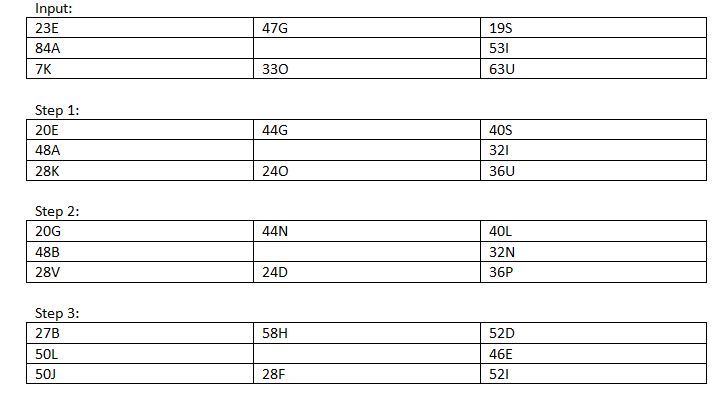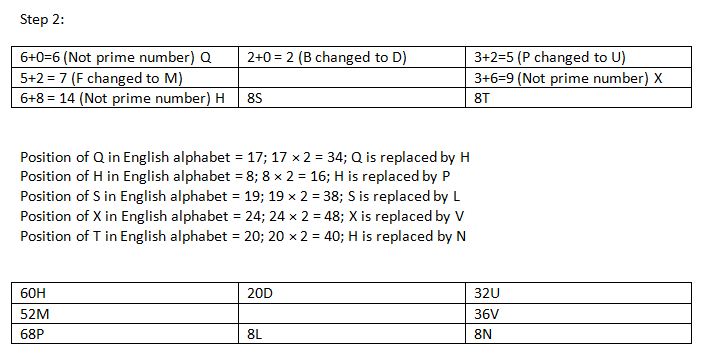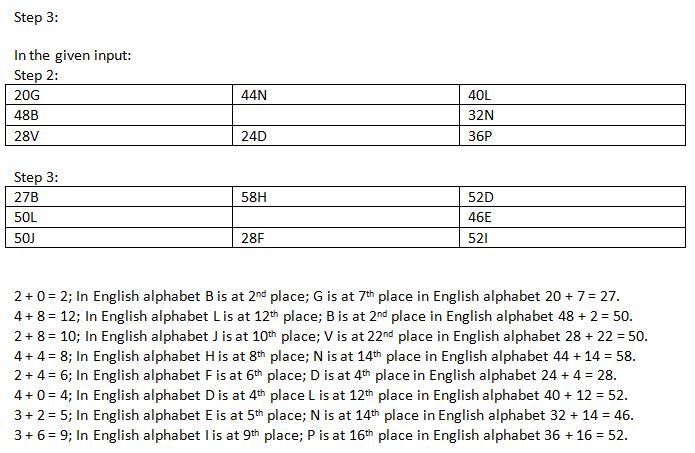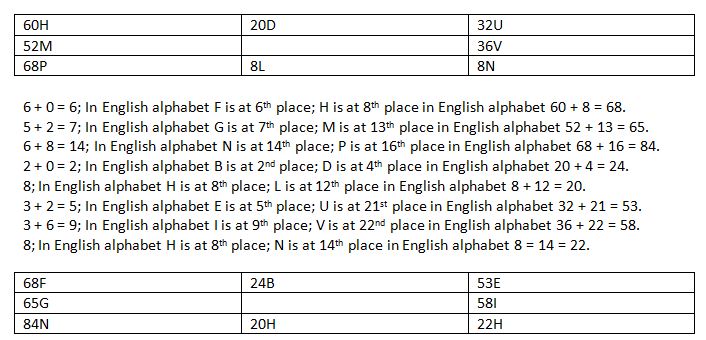Hello Aspirants.
Welcome to Online Reasoning Section with explanation in AffairsCloud.com. Here we are creating Best question samples from Machine Input-output, which is common for all the IBPS, SBI , LIC, and other competitive exams. We have included questions that are repeatedly asked in bank exams !!!
(Directions 1 – 5): A word and number arrangement machine when given an input line of words and numbers rearranges them following a particular rule in each step. The following is an illustration of input and rearrangement.
Input: 32 69 56 88 47 94 54
Step I: 94 32 69 56 88 47 54
Step II: 94 69 56 88 47 54 32
Step III: 94 88 69 56 47 54 32
Step IV: 94 88 69 56 54 32 47
Step V: 94 88 69 56 32 47 54
Step V is the last step for the given input.
As per the rules followed in the above steps, answer the questions for the following input.
Input: 11 19 25 39 61 70 48 36
- Which of the following is the second last step?
1) 70 61 48 39 11 19 25 36
2) 39 61 48 70 25 11 19 36
3) 70 61 48 39 36 11 19 25
4) 39 48 61 70 25 19 11 36
5) None of theseAnswer – 3) 70 61 48 39 36 11 19 25
Solution:
By observing the given input and output, some numbers are arranged in descending order in left end and some numbers are arranged in ascending order in right end.. From one step to the next step one operation takes place.
From input to step I, the largest number and second largest number is shifted to the left end.
From step I to step II, the smallest number and second smallest number is shifted to the right end. This process is continued until we get the desired output.
Input: 11 19 25 39 61 70 48 36
Step I: 70 11 19 25 39 61 48 36
Step II: 70 19 25 39 61 48 36 11
Step III: 70 61 19 25 39 48 36 11
Step IV: 70 61 25 39 48 36 11 19
Step V: 70 61 48 25 39 36 11 19
Step VI: 70 61 48 39 36 11 19 25
Step VII: 70 61 48 39 11 19 25 36 - In a certain way if 70 is related to 19, 61 is related to 11, then which number is related to 36 in step V?
1) 36
2) 39
3) 70
4) 48
5) 25Answer – 4) 48 - How many numbers is/are between ‘61’ and ’11’ in the third last step?
1) Zero
2) One
3) Two
4) Three
5) FourAnswer – 5) Four - Complete the series based on the arrangement in step IV.
70 61 39 __
1) 19
2) 25
3) 11
4) 36
5) 48Answer – 3) 11 - Which number is second to the left of the fifth number from the right in the last step?
1) 61
2) 48
3) 25
4) 11
5) 19Answer – 1) 61
(Direction 6 – 10): Study the following diagram and convert it into other diagram by implementing the instructions which is given in each step to get next step.

Step 1:
The sum of the digits of the numbers in each box are executed and then multiplied by 4.
Step 2:
a) If the sum of the digits of the number in a box is a prime number, then the position of alphabet is added to the sum of digits and replaced by the alphabet occurring at that position as per English alphabetical order.
b) If the sum of the digits of the number in a box is not a prime number, then alphabet is replaced with an alphabet occurring at twice its position as per English alphabetical order.
Step 3 is coded in some special pattern.
As per the rules followed in the above steps, find out the appropriate steps for the given input and answer the given questions.

- Which of the following is opposite to the element 36X in step 1?
1) 68H
2) 52F
3) 60Q
4) 32P
5) 20BAnswer – 2) 52F
Solution:




- What is the sum of all the number of row 1 in step 3?
1) 140
2) 150
3) 155
4) 160
5) 145Answer – 5) 145 - Which of the following is the highest number in step 2?
1) 60
2) 52
3) 36
4) 68
5) 32Answer – 4) 68 - Which element comes in step 1 in the 2nd column and 1st row?
1) 20B
2) 41B
3) 26P
4) 36X
5) 52FAnswer – 1) 20B - Which element comes in step 2 in 1st column and 3rd row?
1) 52M
2) 36V
3) 68P
4) 8N
5) 32UAnswer – 3) 68P







